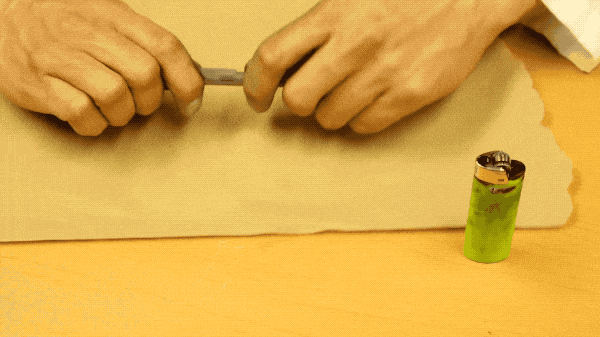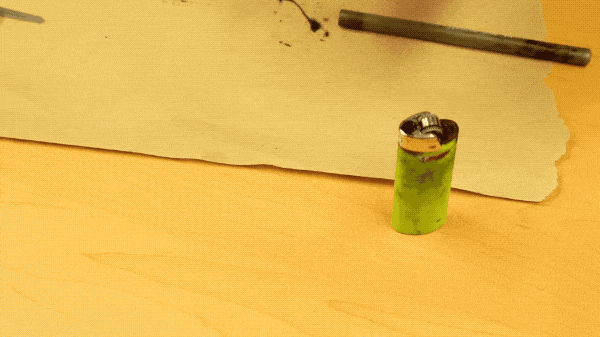
It’s a classic trick to make a lighter flame float, but how does it actually work? As it turns out, the secret can be found on your desk: a ballpoint pen. Though the key to the trick may be simple, there’s some really cool science making it happen. Follow along with us and we’ll show you how and why this works. Be careful though, you will be handling fire.
The first thing you need to do for this is take apart your pen, leaving nothing but the tube of ink behind. When doing this, it’s a good idea to have a paper towel down to catch any ink that leaks out of the tube.
Then, collect some ink with an unfolded paper clip and cover the nozzle inside the lighter where the fuel comes out. This ensures the fuel and ink will mix, a vital part of the experiment. This was the most direct means of mixing the ink and fuel for our disposable lighter, but other lighters have more direct means of accessing the fuel reservoir and those should be taken first.
Once you’ve mixed the ink and the fuel, your flame should appear to float over the lighter. Depending on how well the ink and fuel mix, this effect could be brief, so watch carefully. We know how we get it to float now, but why does adding ink to the lighter fuel make it float?
Normally, butane lighter fuel releases blue light when burned, but the addition of the ink pushes that energy release into the ultraviolet part of the spectrum. Since our eyes can’t see UV light, the portion of the flame from the burning ink appears invisible, producing the illusion that the rest of the flame is floating.




